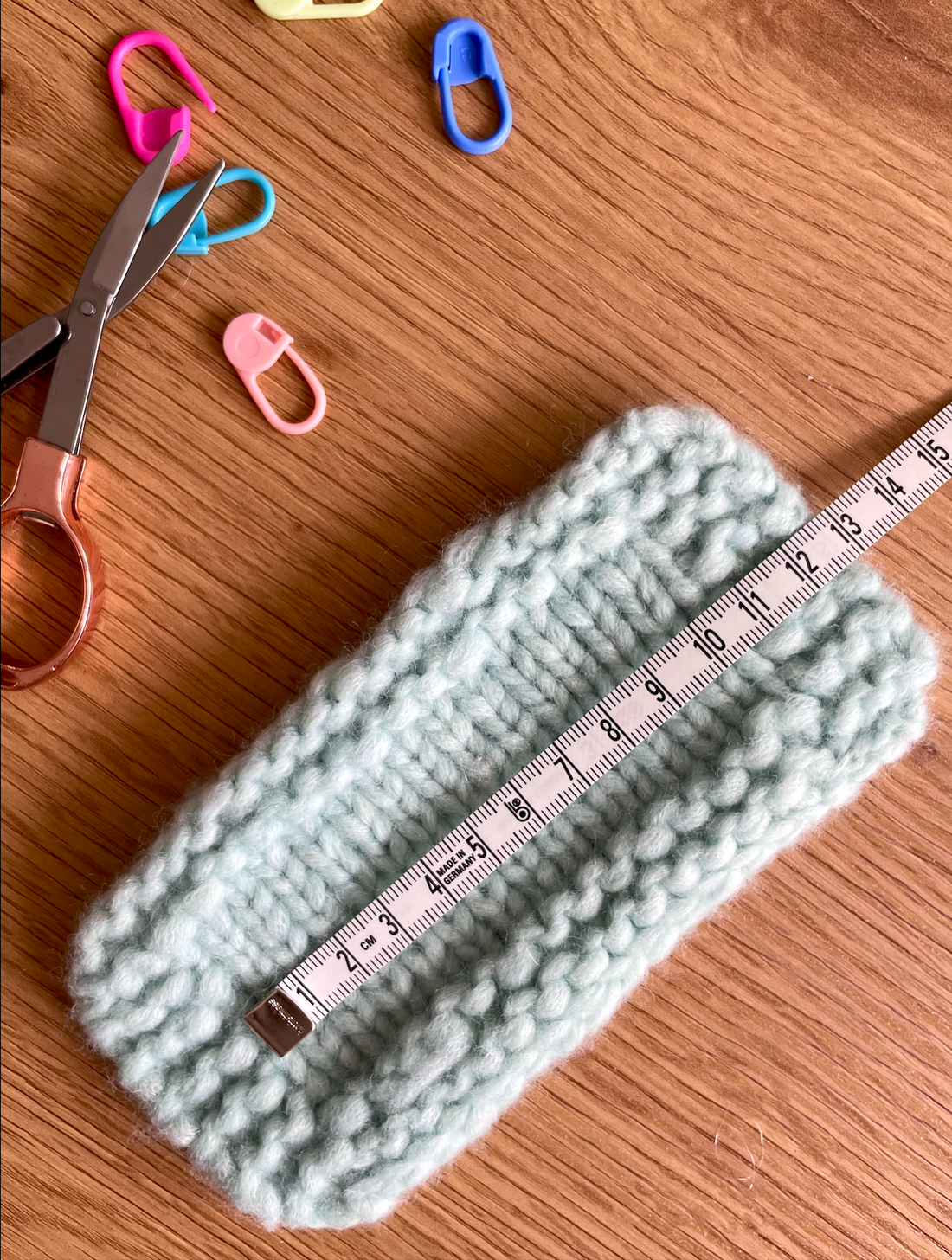
En enkel guide om strikkefasthet
Del
Du har sikkert hørt om ordet "strikkefasthet" før, men hva betyr det egentlig og hvorfor er det så viktig? La oss ta en titt!
Hva er strikkefasthet? 👀
Strikkefasthet viser til antall masker du får per 10 cm i bredden. Hovedårsaken til å strikke en prøvelapp er å sikre at det ferdige prosjektet ditt får riktig størrelse. Ulike strikkere har ulik strikkefasthet, og selv små variasjoner kan endre dimensjonene på et plagg betydelig. Ved å strikke en prøvelapp kan du justere pinnestørrelsen for å matche oppskriftens strikkefasthet, slik at plagget får riktig passform.
Hvordan måle strikkefasthet? 📏
Legg opp flere masker enn antall masker per 10 cm som kreves. For eksempel, hvis oppskriftens strikkefasthet er 15 masker, kan du legge opp 25 masker. Dette gjør at du kan måle midten av prøvelappen uten forvrengninger fra kantene.
Strikk prøvelappen i samme type strikk som prosjektet ditt. Hvis prosjektet hovedsakelig er i glattstrikk, strikk prøvelappen i glattstrikk.
Vask og blokk prøvelappen på samme måte som du vil behandle det ferdige plagget. Dette trinnet er viktig da mange fibre endrer seg betydelig etter vask.
Når prøvelappen er tørr, måler du antall masker på 10 cm, helst sentrert på prøvelappen. Sammenlign disse tallene med oppskriftens strikkefasthet.

I dette eksempelet viser prøvelappen at vi har en strikkefasthet på 13 masker per 10 cm.
Hva nå? 🤔
Etter å ha målt strikkefastheten din, er det tre mulige utfall:
- Du har samme strikkefasthet som oppskriften: Flott! Du er klar til å begynne på prosjektet ditt.
- Du har færre masker per 10 cm enn oppskriften viser til: Velg en mindre pinnestørrelse. Strikk en ny prøvelapp og mål igjen før du begynner på prosjektet.
- Du har flere masker per 10 cm enn oppskriften viser til: Velg en større pinnestørrelse. Strikk en ny prøvelapp og mål igjen før du begynner på prosjektet.
Vær obs på dette ⚠️
Når du strikker en prøvelapp, strikker du frem og tilbake og ofte i glattstrikk. Vær oppmerksom på at strikkefastheten din når du strikker rundt kan avvike fra strikkefastheten når du strikker frem og tilbake. Dette skyldes ofte løsere vrangmasker. I så fall kan du bruke en pinnestørrelse mindre enn du skal når du strikker vrangmaskene (anbefaler utskiftbare pinner her).
Et annet tips er å måle strikkefastheten din på det faktiske prosjektet etter å ha strikket en stund. På den måten kan du sikre at du fortsatt er på rett vei og at strikketøyet vil få riktig størrelse.
Noen siste anbefalinger
Ikke bli fristet til å hoppe over prøvelappen! Det kan virke kjedelig, og du har sikkert lyst til å begynne å strikke med en gang, men husk at det å ikke sjekke strikkefastheten på forhånd kan føre til at du må rekke opp eller at resultatet ikke blir som ønsket 😫
Med vårt designverktøy kan du lage ditt eget unike mønster spesifikt tilpasset ditt garn, din strikkefasthet og pinnestørrelse. Prøv det her! 🧑🎨
